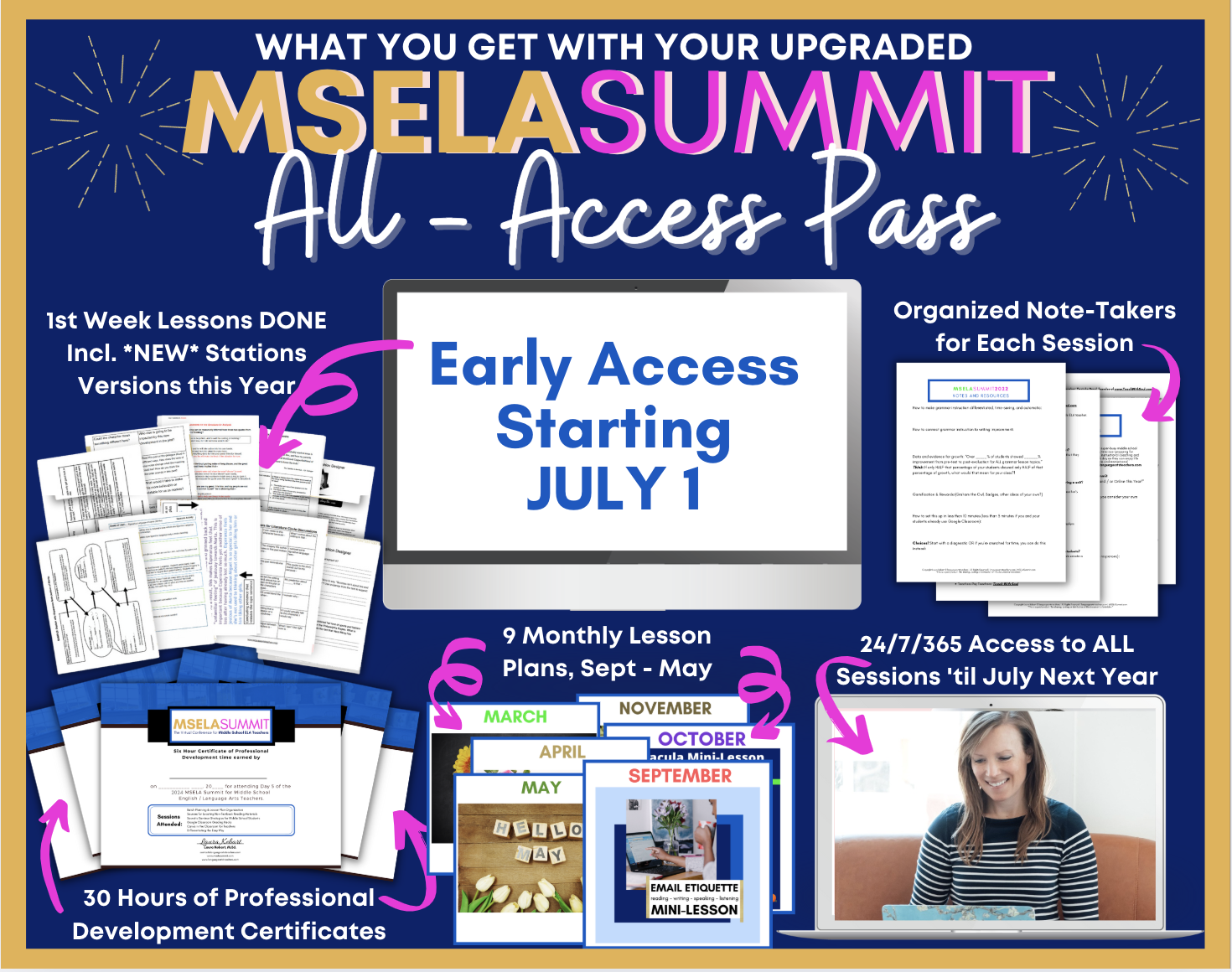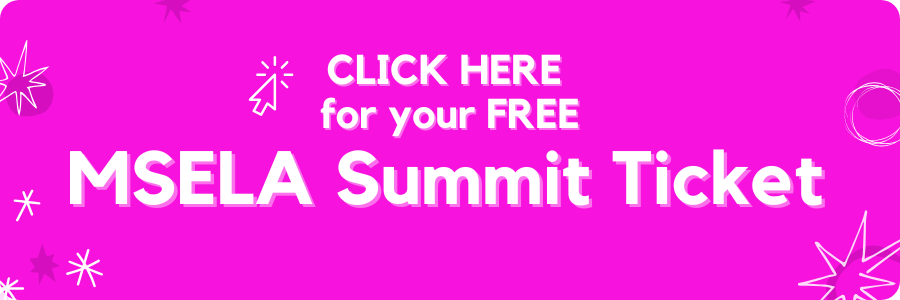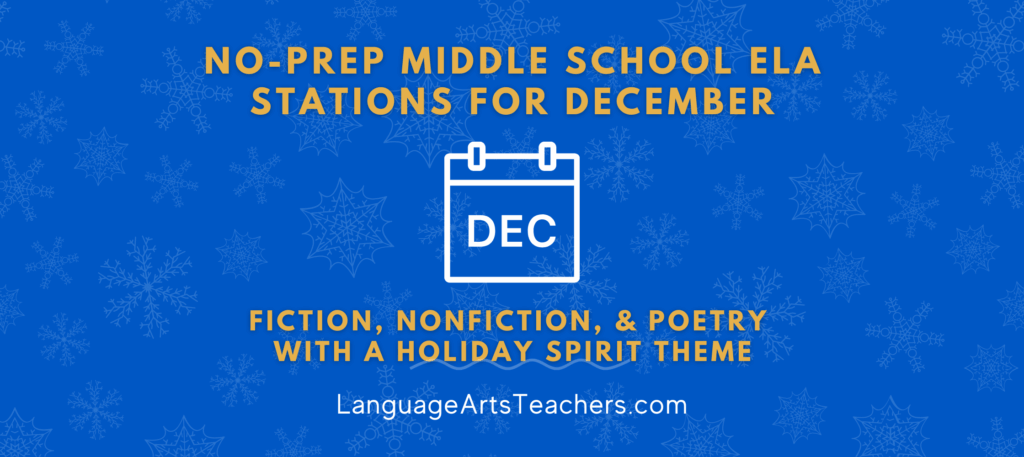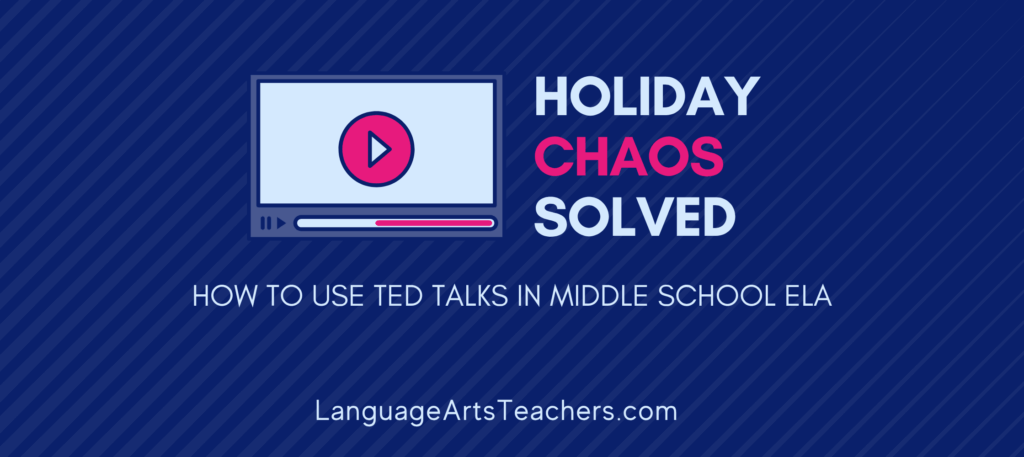I’m sharing my tried-and-true low-stress way to wrap up the school Year in my Middle School ELA class ✏️📚🎉
Listen, we all know the last few weeks of school can feel like you’re starring in a weird spin-off of Survivor: Middle School Edition — supplies are running low, attention spans are even lower, and everybody’s mentally halfway to summer vacation already. 😅
That’s why this Year-End Memory Book Project is about to be your new BFF. 💖 Instead of battling through half-hearted lessons or trying to duct-tape random activities together, you can give your students something meaningful (and super flexible) to do — while you sip your 3rd coffee and wrap up grades without losing your mind.
Here’s the gist:
Students choose from 20 ready-made reflection prompts (or make up their own!) to create a personal Memory Book celebrating their school year. They’ll write short entries, decorate their pages if they want, and reflect on everything from hilarious locker disasters to big life lessons they learned this year. 📝🎨🎶
What’s even better?
- Students can handwrite or type their Memory Books — or mix it up with drawings, keepsakes, and even video documentaries if they’re feeling fancy. 🎥🎨
- Each entry has a purpose: it’s about what they learned, how they grew, and what moments mattered — NOT just “what I ate for lunch last Tuesday.” 🍕
- You don’t have to grade every single thing (because who has time for that?!). Instead, you’ll do super-fast daily checks that keep kids accountable without piling on work for yourself.
- You control how big or small it is — perfect for squeezing into those last 10, 12, or 15 class days when everything else feels chaotic.
- It’s creative, student-centered, and 100% customizable — which means it works for all kinds of learners, including your artists, introverts, writers, dreamers, and future TikTok stars. 🌟
Bottom line? This project turns those weird, wobbly last weeks of school into something actually worth remembering (pun totally intended 😉). Plus, it leaves your students feeling proud of their growth and gives you a calm, organized way to slide into summer.
Ready to see how it works? Here’s the full Memory Book Project below! 👇
This is what I give my students:
“We don’t remember days. We remember moments.”
Cesar Pavese, Italian Poet (1908 – 1950)
8 GUIDELINES for CREATION
1) Your memory book will be compiled of _____ reflection topics you choose to write about based on this particular school year as it comes to a close. There are 20 topics to choose from.
2) Each topic is considered an “entry” in the memory book, so each one will have its own page. You may sketch or draw around it, use various colors of ink if desired, include images or other personal mementos like movie tickets or other artifacts to bring the entry to life. Or not. It’s yours to design and create!
3) Each entry will have its own unique title that you come up with yourself. (Writing Tip: It’s usually much easier to think of a great title after you’ve written the entry).
4) You may create this as a digital eBook (if you prefer to type or if you know your handwriting is difficult to read) or as a written book (it’s pretty cool to look at how your handwriting changes over time) – it could also be a combination of the two!
5) If you have a topic you’d like to write about that doesn’t fit in with any of the 20 topics provided already, you may do so.
6) Each entry (i.e. each memory) must serve a purpose. In other words, each entry must ultimately show what you learned from the experience you are writing about, or how you changed or grew, or a new life lesson you learned, or what new understanding or new perspective you gained.
7) You need to show me an entry each day so I can check that you have it done. You need a rough draft and a final draft for each entry. You can write each day’s rough draft entry at home on your own time and then spend class time working on your final one. Or, you could write the rough draft version in class, like one each day, and then at home you could finalize the entry that way.
7) This is your best work, your best writing. Check your spelling and punctuation. Ask for help or look up what you need to help you. Proofread.
8) The memory book is YOURS (create it, keep it safe, look at in 20 years, take pride in your work because you’re doing this for you, not for me).
Next, I give them this collection of prompts they can choose from:

Ideas for the Teacher
I’ve used this Memory Book in various ways, depending on my students, depending on how many days I’ve been able to provide for this, or how many days I needed to “fill”, so here are some options that you can consider for your own classroom:
– If you have 10 class days to “fill” then have students choose 8-10 topics so they can write one per day (rough copy & final copy + adding any images, sketches, etc.)
– Think about an appropriate length for your students to write (‘cuz they’ll ask how long each entry has to be!) For me, I always want my students to focus on the depth and the details of the entry, not the length. If your students need something more concrete, think about where they are developmentally. You might have some who will struggle to make each one even half a page. Others may do really well with more like a page or two. It just depends on your students and where they are in their knowledge, creativity, and comfort with writing.
– I NEVER grade all this. I do NOT take home each entry each day and stay up late reading them. That would be ridiculous and completely unsustainable. Instead, I “check” each entry each day.
Here’s what “checking” each entry each day looks like:
As students work on entry #2, they leave entry #1 on their desks (or on their computers). I ask them to have already hi-lighted or marked or underlined the part of the entry that shows the most detail about the experience (sight, sound, taste, touch, smell, or strong feeling) AND the part of the entry that shows the lesson learned, or how they grew from the experience, or what they discovered from it.
This way, two important parts are already marked for me to check. I take maybe 10 seconds to scan over those marked sections, place a “tick mark” on my roster that I walk around with, which means they met the requirements of the entry, and I move on to the next student as they’re all working.
I’m not checking for punctuation or spelling—I’ll point out something obvious if I see it, but I’m not stopping to go into a ton of detail. Instead, I encourage students to ask each other for help, to look up what they need, etc. I’ll do quick mini-lessons on major issues if they come up, but other than that, students are pretty much writing the whole time.
So what about an actual grade?
If I decide that I want students to write 10 entries (choose any 10 of the 20), then each “tick mark” represents 10% of the assignment. So all 10 would be a 100. I’m super-easy on grading this! If I have 15 days of school left, or if grades have to be submitted before the Memory Book would be done, then I submit what I can and I literally do not worry about the rest.
Final Thoughts:
I really try to instill in students that this is THEIR Memory Book to save, keep, pull out in 20 years to show their own kids, etc.
Many times, kids really do buy into this. I’ve had kids show up with scrapbooks and all the scrapbooking “gear” and get pretty serious on those last few days of school, even though grades are done, just to work on this.
I’ve had other kids who barely put in any effort, and yet are awed by the work they see coming from others in the class on this project.
Likewise, I’ve had extremely artistic kids who end up writing fairly little yet drawing and sketching their books instead. I mean, why not? They’re busy, they’re doing something worthwhile that holds intrinsic value to them, and I won’t complain about that during the last week or so of school!
I’ve even had students ask if they could turn their Memory Book into a series of little video documentaries. Their entries become “scripts” and they practice reading, memorizing, and recording them.
I’ve had students turn the entries into poems before, and I even had one student write each entry in the form of a one-act play.
The sky’s the limit! I’ve always chosen to let them be creative with it and to make it into what they want it to be.
Feel free to modify the idea and / or the prompts as you wish to make it work for your particular grade level and student needs.
You know what else will help you slide into summer? The MSELA Summit, the back-to-school virtual conference for Middle School ELA Teachers!
Your ticket to the virtual conference will give you everything you need (and nothing that you don’t) to get set up and organized for the new school year—no wasting summer worrying about how that first week back will go!
→ Along with everything else you want to know about back-to-school reading + writing strategies, classroom management + engagement, and scaffolding for our struggling students, we’re also including a handful of sessions specifically designed to help Middle School Reading & Writing Teachers leverage AI for student use AND for our own use as well.
Get your free ticket to the MSELA Summit which is the annual back-to-school virtual conference specifically designed for Middle School ELA Teachers.
Click Here for the Dates + Details!





